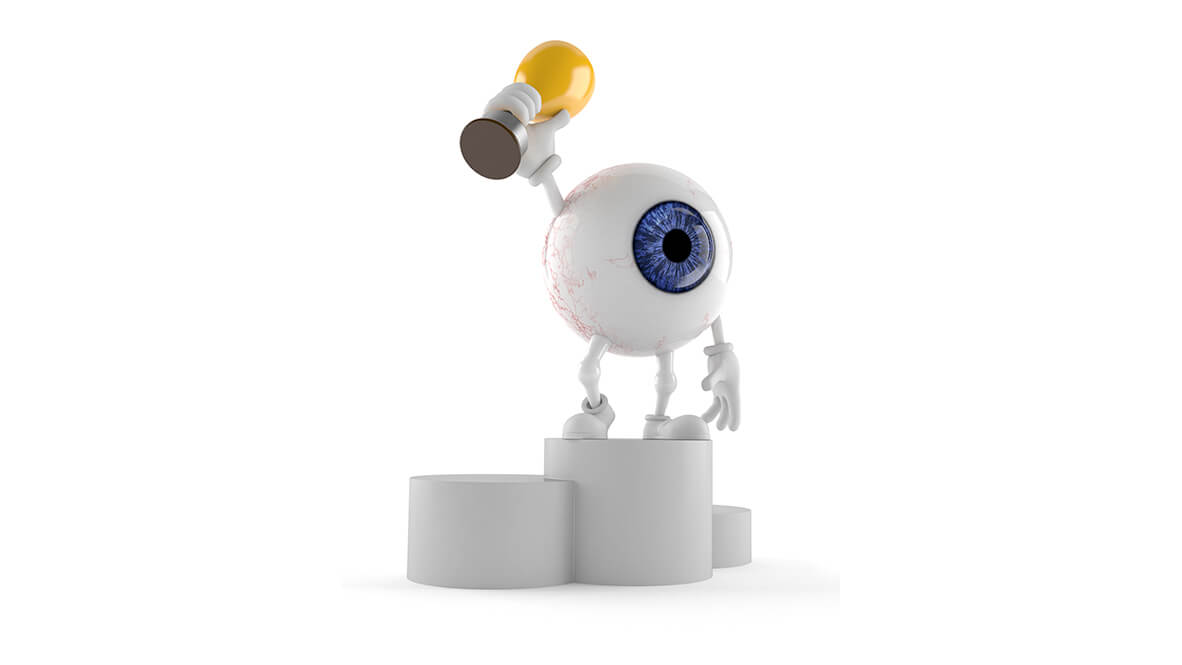Nearsightedness — or myopia, to you doctors out there — is a growing and ongoing problem worldwide, and it’s only set to expand in its scope, unlike its sufferers’ vision. And by expand, we mean “dramatically increase” to the point where it’s a worldwide healthcare crisis.
It’s not just us arguing that. Indeed, the American Academy of Ophthalmology published a press release recently in which they note that, if trends continue, half the world’s population will be myopic by 2050.
This is largely a youth crisis, and especially so in East Asian countries. As CAKE magazine has reported recently, Singapore is leading the charge both against myopia and in myopia rates, as their children experience some of the highest instances of nearsightedness in the world. According to studies by the Singapore National Eye Centre (SNEC), 10% of Singaporian children will be myopic by 5-years-old, 60% by 12-years-old and 80% by 18-years-old. You don’t need to be a doctor to see that’s a problem.
So, what’s causing all of this myopia? Is this something new? What are the broader implications of so many cases of myopia?
Multifactorial Visual and Social Problems
Mr. Magoo aside, myopia is no joke. If not managed, it can lead to a host of problems, including retinal detachment, glaucoma, early cataracts and myopic maculopathy. You want more serious problems than childhood nearsightedness? You got them.
The AAO also noted that some $244 billion worldwide is lost due to uncorrected myopia in the form of decreased productivity. When it’s hard for people to see well, it’s hard for them to do their jobs — especially in advanced economies where reading things is, like, really important.
Our same beloved AAO recently (Oct 20, 2021) held a live streamed press conference on the newest myopia research and treatments — feel free to check it out here.
But as the saying goes, an ounce of prevention is worth a pound of cure. In this case, the prevention can be pretty darn simple, as speakers from the SNEC noted repeatedly in recent conferences.
A crisis of the indoor kids?

When the idea arises that myopia affects East Asian children more than others, it’s easy to pass that off to genetic differences. However, a landmark 2008 study showed that students of Chinese ethnicity in Singapore and Sydney, Australia, presented wildly different results in myopia. A whopping 29.1% of the Singaporian 6- and 7-year-olds suffered from myopia while only 3.3% of the Chinese-heritage kids in Sydney did. So, what gives?
One simple explanation is time spent indoors versus time spent outdoors. Like all parts of the body, the eyes develop significantly during childhood and respond to stimuli. If a kid spends most of their time indoors, like many Singaporian children do, then myopia seems more likely to develop. The Sydney-based kids had much more time outdoors, so their eyes developed sans myopia. Case closed, and we’re done here, right?
There’s Always a Catch
If you said in your head, “not quite” to the previous questions, congratulations — you’re probably right. Another recent study, comparing Singaporian students to Finnish students, noted a mild difference in myopia, with Finnish kids coming out on top. However, the study pointed out that “the result remains unexplained.” They suggest that the age of myopia onset should be considered when comparing myopic progression between groups.
But anyone with any geographic sensitivity will see a huge difference here: Finland is cold. Kids in Finland spend a huge amount of time indoors during the winter, and are outdoors in low-light conditions for much of the year. This is just us spitballing here, but … doesn’t it stand to reason to compare apples to apples?
Singapore is a tropical country, in which kids stay indoors for a long time because it’s hot and because there’s little outdoor space available for kids to explore. Finland is cold as your ex’s heart for most of the year, so kids spend time indoors as well. The comparison may be missing some fundamental lifestyle differences.
The study between the Singaporian kids and the Sydney kids is perhaps the most telling. Sydney and Singapore are both sunny and warm, but Australian kids in general get much more outdoors time. So, is it just a lifestyle thing?
Just Take Your Kids Outdoors, Dang It

One suggestion repeated by ophthalmologists of all stripes is that myopia can be prevented in children by simply spending more time outdoors. Above all, that means time away from screens. Did your mother, like many, tell you that the TV would ruin your eyes? She’s not wrong. Going outside requires the eyes to recalibrate their vision to longer distances. Perhaps exposing your eyes to many different distances — like those experienced in real life, spent outdoors — is the simple solution we’re all looking for.
Of course, myopia has been a condition that’s afflicted humanity forever, and affects other species as well. But simply doing our part to get kids outdoors seems like the safest and most humane way to reduce the risk of myopia in the future. Turn off the tablet, turn off the TV, turn off the computer, and go for a walk. Wild stuff, we know.
We’ll get into the medical and ophthalmic treatments for myopia here soon, but a bit of logic is always valuable. Worried about your kid’s eyes? Get them outside.



